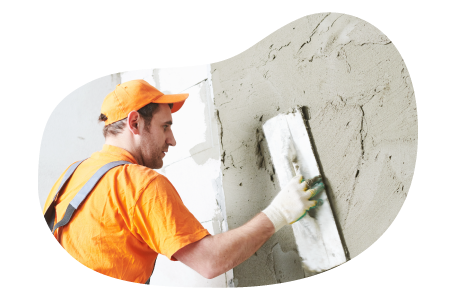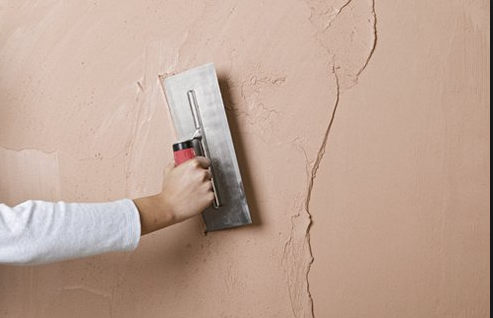Plastering Made Simple: Step-by-Step Overview for Beginners
Plastering Made Simple: Step-by-Step Overview for Beginners
Blog Article
A Comprehensive Guide to Learning Plastering Abilities for Your Restoration Demands

Important Tools and Products
Various necessary devices offer unique objectives, making certain performance and accuracy throughout the plastering process. A top notch trowel, for circumstances, is vital for using and smoothing plaster, while a hawk supplies a secure system for holding the material.
In enhancement to tools, selecting the best plastering products is important. Gypsum-based plasters are frequently preferred for their convenience and simplicity of usage, while cement-based options are excellent for exterior applications due to their longevity. Water and bonding agents play substantial duties in achieving correct uniformity and attachment, making sure that the plaster adheres effectively to the surface area.
In addition, safety equipment such as safety glasses, masks, and gloves is essential to secure against dust and irritability during the application process. By constructing the right combination of products and devices, plasterers can improve their capability and generate high-quality surfaces, eventually elevating the overall craftsmanship of their job.
Preparing Surface Areas for Smudging
Attaining a resilient and smooth plaster surface starts with careful prep work of the surface areas to be smudged. This fundamental action is crucial to making sure attachment and the long life of the plaster. Beginning by evaluating the problem of the substratum-- whether it is stonework, concrete, or drywall-- getting rid of any loosened paint, dirt, or debris that may conflict with bonding.
Following, fix any type of blemishes such as openings or splits. Utilize an appropriate filler to accomplish a level surface area; this can be essential for preventing future problems. When fixed, guarantee the surface area is dry and tidy, as wetness can jeopardize plaster adherence.
For porous surfaces, it is a good idea to use a bonding agent. This product improves attachment and creates a trustworthy user interface between the plaster and substrate. If dealing with previously plastered surfaces, it may be necessary to scuff or sand the area gently to offer a trick for the new plaster layer.
Smudging Techniques and Tips
Understanding gluing techniques needs both ability and method to accomplish a flawless surface. One crucial strategy is the application of the plaster in several slim layers, as opposed to a solitary thick layer. This technique enables far better adhesion and minimizes the risk of cracking. Beginning with a base layer, ensuring it is equally spread and leveled with a hawk and trowel. Utilize a straightedge to look for any kind of flaws before proceeding to subsequent layers.
When using the surface coat, use a troweling method that entails holding the trowel at a minor angle and operating in a round motion. This assists to develop a smooth surface and reduces the appearance of trowel marks. In addition, keep a spray container of water helpful to haze the surface gently; this keeps the plaster convenient and enables smoother link finishing.
Timing is critical; work effectively, as the plaster starts to establish. As soon as the plaster has tightened yet is still moist, make use of a moist sponge to delicately smooth the surface further. Finally, enable sufficient drying out time before fining sand or paint, ensuring your tough job results in a specialist, top notch finish.
Usual Blunders to Prevent

Another typical mistake is applying plaster as well thickly. Excitable applications can bring about cracking and prolonged drying times. It's vital to use plaster in slim, even layers, look at this site enabling each coat to dry sufficiently before adding more.
Furthermore, not using the right devices can prevent the top quality of the coating. Utilizing unacceptable trowels or mixers can develop incongruities in the gluing process. Always select top quality tools designed for smudging jobs.
Finally, numerous individuals underestimate the importance of timing. Functioning in inappropriate temperatures or humidity degrees can negatively impact plaster drying and healing. It is recommended to examine climate condition and adapt your timetable as necessary.
Completing Touches for a Professional Look
The last phases of a plastering project are essential for accomplishing a refined, professional look. When the plaster has actually dried out completely, the next action is to examine the surface area for blemishes.
After fining sand, it's advisable to clean the surface area to eliminate any dust and debris. A wet fabric works for this function, adhered to by a comprehensive drying out period. If required, applying a thin layer of finishing plaster can enhance the surface area additionally, providing a smooth coating.
When the ending up plaster is dry, another round of fining sand might be required to attain the desired smoothness. Ultimately, consider applying a learn this here now guide prior to paint or wallpapering, which will improve attachment and toughness.
Verdict
Mastering gluing abilities substantially enhances the high quality of restoration jobs. A detailed understanding of vital tools, surface preparation, and effective methods is vital for attaining specialist results.
Water and bonding representatives play significant functions in attaining appropriate consistency and bond, making certain that the plaster sticks effectively to the surface. Plastering.


Additionally, keep a spray bottle of water convenient to mist the surface area gently; this keeps the plaster convenient and permits for smoother completing. (Plastering)
If needed, applying a thin layer of ending up plaster can boost the surface area further, offering a smooth surface.
Report this page